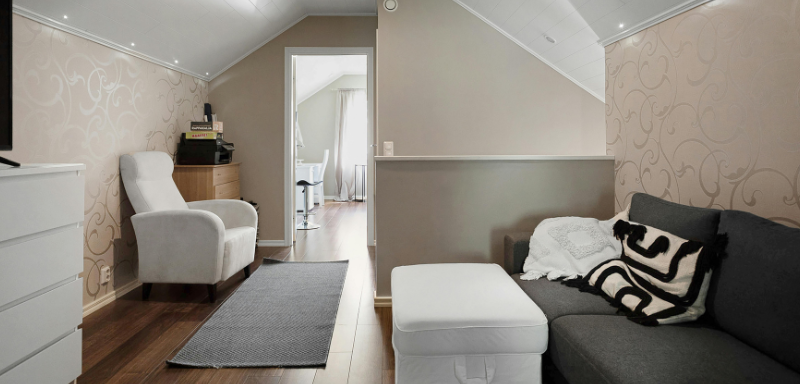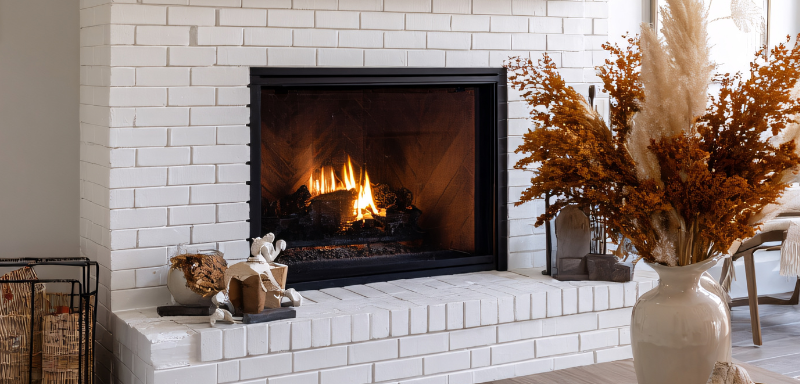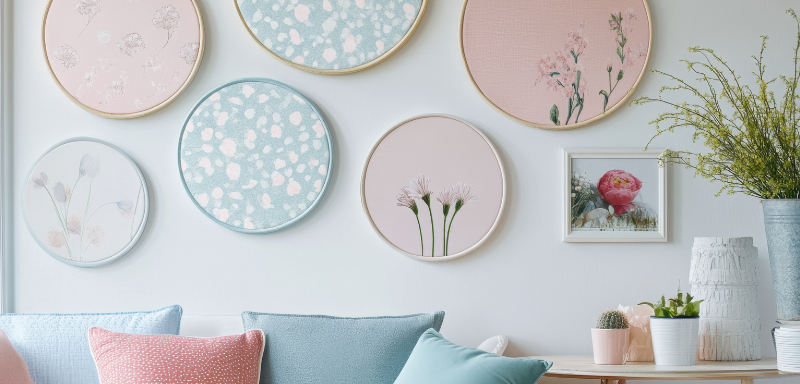Discover how to use textures to bring your space to life with practical and stylish tips using stone, wood, fabrics, and more. Get inspired and transform your home!

If there’s one thing that completely transforms the energy of a space — and often goes unnoticed — it’s texture. That’s right, textures are those surfaces that awaken our senses, that make us want to touch the sofa, lean against the wall, feel the coziness of a rug, or the rawness of unfinished wood. More than just visual beauty, they evoke sensations.
As a landscaper and interior decor enthusiast, I can say with certainty: if you want to bring your space to life, bet on textures. They have the power to warm up cold spaces, make everything more welcoming, and still reveal your personality without you having to say a word. And the best part? You don’t need major renovations to get this effect. Small touches here and there already make a huge difference.
Whether you’re just starting to build or renovate your home — or if you’re already passionate about this world — this article is for you. Let’s explore 5 textures that truly work magic in any space. And of course, with practical tips on where and how to use them.
1. Linen and Natural Fabrics: the Touch of Light Comfort
Is there anything better than sinking into a sofa with soft cushions after a long day? Natural fabrics like linen bring that exact feeling of coziness and lightness. They have a casual look, a beautiful crinkle, an uneven texture that instantly conveys comfort.
Where to use?
- Cushions and throws on the sofa;
- Curtains in neutral tones;
- Duvet covers in the bedroom;
- Armchairs upholstered in raw linen.
Why they work
These fabrics literally breathe. Besides being pleasant to the touch, they’re ideal for warmer climates (like Brazil), as they’re fresh and help lighten the environment. They blend perfectly with styles like Scandinavian, boho, natural, or farmhouse.
💡 Pro tip: if you want to take the first step toward bringing your space to life, switch out old cushions for linen covers in earthy or off-white tones. The result is instant.
2. Wood with Visible Grains: a Visual Embrace
Wood has soul. When you look at a piece with well-marked grains, it feels like it has a story. And it’s precisely this texture — with knots, grooves, and imperfections — that makes wood “embrace” the space.
Where to use?
- Slatted panels in the TV room;
- Reclaimed wood countertops;
- Shelves with rustic finishes;
- Headboards and furniture in raw style.
Why they work
Wood warms up the environment. It’s timeless, pairs with almost all styles, and connects us with nature. Even in more modern or minimalist decor, the presence of wood softens the coldness and adds a sense of well-being.
💡 Pro tip: invest in a natural wood console for the entrance. It’s functional and will immediately create an impactful first impression.
3. Burnt Cement and Rustic Finishes: the Charm of the Imperfect
Burnt cement has gained space in recent years — and for good reason. It has an urban, contemporary feel, while being discreet and easy to pair. The most interesting part? The irregular and blotchy texture gives this finish its personality.
Where to use?
- Living room or powder room walls;
- Kitchen or bathroom countertops;
- Flooring in open spaces;
- Decorative vases and objects.
Why they work
Besides being practical and durable, burnt cement brings an industrial and laid-back vibe. Its texture isn’t smooth or cold but has “life,” especially when paired with warmer materials like wood or leather.
💡 Real-life example: A client wanted a minimalist apartment, but without the “clinic” feel. We used burnt cement on the living room wall and balanced it with a forest green velvet sofa. The result was a modern space with soul.
4. Natural Fibers: Nature Straight to Your Home
Fibers like rattan, sisal, straw, and bamboo are gaining prominence not only for their charming look but also for their sustainability. They literally carry the texture of nature. And that, in itself, completely changes the ambiance.
Where to use?
- Pendant lights over the dining table;
- Sisal or jute rugs;
- Organizer baskets in bathrooms and bedrooms;
- Rattan chairs or armchairs.
Why they work
Besides being eco-friendly, these fibers offer a light, natural texture that creates a sense of freshness and authenticity. They’re perfect for spaces seeking calm and organic connection.
💡 Golden tip: a sisal rug under the living room coffee table adds a natural and cozy touch without visually weighing down the space.
5. Velvet and Soft Shine Fabrics: Sophistication and Comfort
Want to add a touch of sophistication to your space? Velvet is a classic choice. But unlike what many people think, it doesn’t have to be over-the-top. Nowadays, velvet comes in soft shades with a matte finish, fitting beautifully into contemporary spaces.
Where to use?
- Cushions and throws in the bedroom or living room;
- Armchairs or ottomans;
- Elegant curtains with soft draping;
- Upholstered headboards.
Why they work
Velvet has that touch-me texture. It subtly reflects light, creating visual depth. Used in moderation, it enhances any setup and offers physical and visual comfort.
💡 Pro tip: to be safe, choose a muted tone — like olive green, petrol blue, or terracotta — and use it on a single standout piece.
6. Textured Stone or Wood Cladding: Grandeur and Authenticity
If there’s one feature that unites sophistication, visual impact, and a natural feel all at once, it’s textured stone or wood wall cladding. These are often seen in high-end designs but also fit beautifully into simpler spaces when well applied. These surfaces don’t just visually transform a room — they shift how we perceive depth, temperature, and style.
Where to use?
- Accent walls in the living room;
- Fireplaces and TV panels;
- Outdoor areas and façades;
- Spa-style bathrooms;
- Rustic or contemporary kitchens.
Stone cladding: nature’s strength inside your home
Natural stones or stone-effect finishes provide impressive aesthetic weight. The rough texture, irregular reliefs, and color variations give each wall a unique story. They’re excellent for creating a focal point.
Popular options include:
- Quartzite strips (canjiquinha);
- Iron stone;
- Marble mosaics.
These textures are ideal for those wanting to bring life to a space with more personality, moving away from flat and cold surfaces. A stone wall, even in small spaces, can create a cozy yet bold atmosphere.
💡 Expert tip: combine stone with targeted lighting (like warm spotlights) to highlight its volume and shadows.
Wood cladding: visual warmth and timelessness
If you want to unite texture with warmth and coziness, wood is your best ally. When used as a wall cladding, it goes beyond a finish — it becomes the star.
You can choose:
- Slatted natural wood or textured MDF panels;
- Irregular wood slats;
- Reclaimed wood panels.
These elements add depth and warmth even to the most neutral rooms.
💡 Pro tip: use wood only in a vertical strip on the headboard wall or as a TV frame. You’ll add texture without overloading the space.

How to balance stone and wood in the same project?
The key is to choose tones that match. For example:
- Light stone with light wood;
- Dark stone with rustic wood;
- Wood indoors and stone outdoors.
And remember: less is more. If you choose a stone wall as a focal point, balance the rest of the space with softer textures.
Coating Types Table: Use and Cost-Benefit
| Type of Cladding | Common Uses | Cost-Benefit |
|---|---|---|
| Natural stone (quartzite, iron) | Feature walls, façades, fireplaces | High visual impact, medium/high cost, durable |
| Natural wood (reclaimed, slatted) | Indoor panels, headboards, living areas | High comfort and aesthetics, medium cost |
| Textured MDF | Decorative panels, custom furniture | Good aesthetics and versatility, affordable |
| Burnt cement | Walls, floors, countertops | Modern style, low cost, easy maintenance |
| Natural fibers (rattan, sisal) | Rugs, lighting, baskets | Sustainable, light, great cost-benefit |
| Relief tiles | Kitchens, bathrooms, feature walls | Strong visual effect, easy maintenance, medium cost |
| Exposed brick | Living rooms, kitchens, balconies | Rustic charm, durable, medium cost |
| Velvet (ribbed or smooth) | Upholstery, cushions, curtains | Sophisticated, tactile, variable cost |
Honorable Mentions
- Natural or synthetic leather;
- Exposed concrete;
- Relief tiles;
- Exposed brickwork.
How to Mix Textures Without Mistakes?
The tip here is simple: contrast with balance. Mix warm with cool materials, smooth with rough, matte with shiny.
Examples:
- Burnt cement wall + linen sofa + velvet cushions;
- Sisal rug + wooden table + metal pendant light.
The Textured Effects Taking Over 2025
If you’re keeping up with the top interior decor trends for 2025, you’ve likely noticed: textured effects are no longer just details — they’re the stars of the show. This year, the focus on sensory, cozy, and unique environments is stronger than ever — and texture is the key element driving that transformation.
One of the big bets for 2025 is 3D wall cladding, with geometric shapes in relief, mainly on feature walls or headboards. They create light and shadow effects, add visual depth, and instantly modernize the space.
Another hot trend is handcrafted texturing effects, like marble-effect finishes, spatula painting, or concrete with custom techniques. This aesthetic values the handmade and makes the environment more exclusive, steering away from flat and cold surfaces.
Velvet, which was already on the rise, now appears in bolder shades and ribbed textures, offering a visually appealing feel without compromising comfort. And let’s not forget brushed wood, which enhances natural grain patterns and adds irresistible rustic-chic charm.
In general, 2025 is the year where feeling is as important as seeing. Touch, relief, contrast, and movement are the pillars of current decor. And that’s great news for those looking to bring their space to life in a unique and heartfelt way.
Conclusion: Texture is Emotion
More than a trend or decorative detail, textures are the secret to transforming ordinary spaces into environments full of personality. They can convey emotion, tell stories, and provoke tactile and visual sensations — all with elegance and natural charm.
If you want to bring your space to life, start by observing. Notice the materials around you, touch the surfaces, feel what speaks to you. Gradually, start introducing the textures we discussed here. You’ll see how even in neutral settings, the result is completely different.
That’s what decorating is all about: feeling, experimenting, allowing yourself. And texture is the simplest (and most powerful) path to creating spaces that truly have soul.



